Abstract
OBJECTIVE--To determine the extent to which minor surgery undertaken by general practitioners after the introduction of the 1990 contract substituted for hospital outpatient workload. DESIGN--Before and after observational study. SETTING--Four English family health services authorities. SUBJECTS--Patients in 22 practice populations who were operated on by their general practitioner or referred to hospital for minor surgery during April to June 1990 or April to June 1991. MAIN OUTCOME MEASURES--Numbers of minor surgical procedures undertaken in general practice and in hospital, numbers of referrals to hospitals for conditions treatable by a minor surgical procedure, and the mix of diagnoses and procedures undertaken in each setting. RESULTS--General practitioners claimed reimbursement for 600 minor surgical procedures during April to June 1990 and for 847 during April to June 1991, an increase of 41%. Referrals to hospital for comparable conditions showed no compensatory decrease (385 during April to June 1990 and 388 during April to June 1991, 95% confidence interval for change in referrals -51 to 57), and the number of hospital procedures resulting from those referrals also remained constant (187 in the first period, 189 in the second, 95% confidence interval for change in procedures -36 to 40). The mix of procedures did not change significantly from one study period to the next in either setting. CONCLUSIONS--Many or all of the additional patients receiving minor surgery under the terms of the 1990 contract may not have previously been referred to hospital. General practitioners seem not to have systematically shifted towards treating the more trivial cases. The overall increase in minor surgical activity may reflect an improvement in accessibility of care or changes in patients' perceptions and attitudes.
Full text
PDF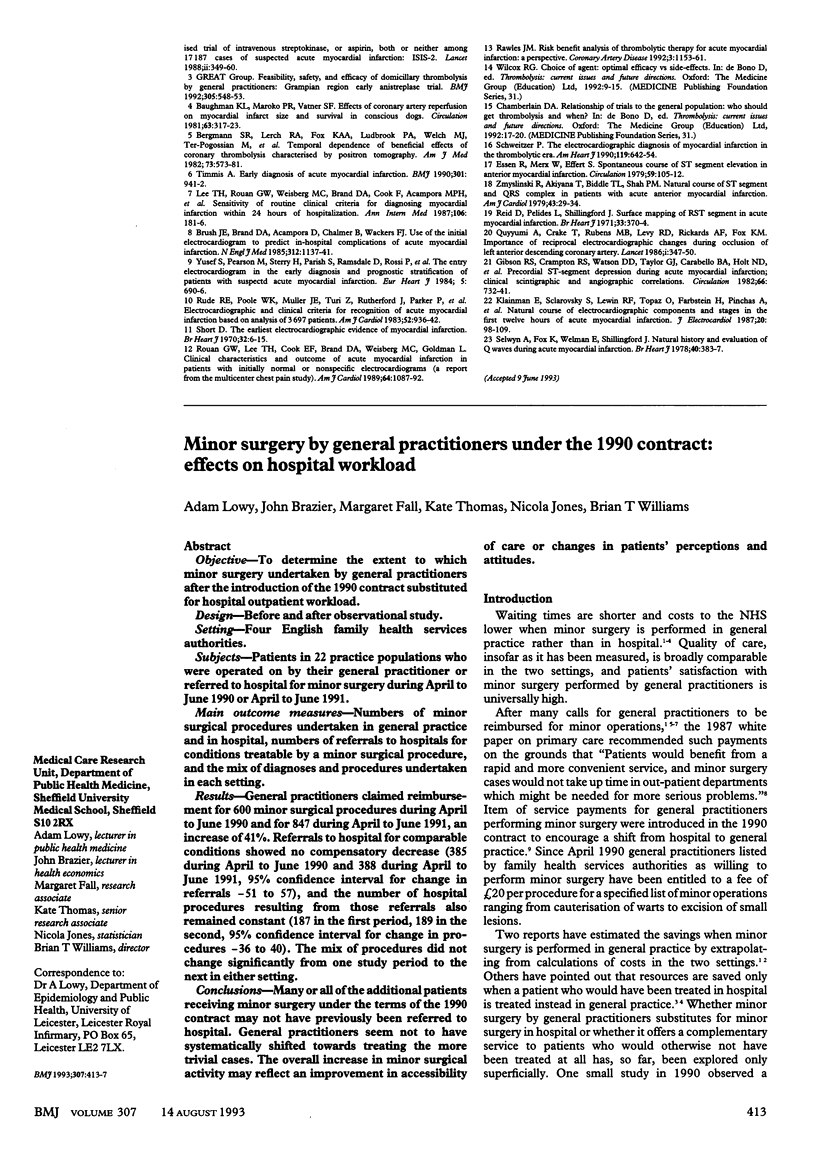
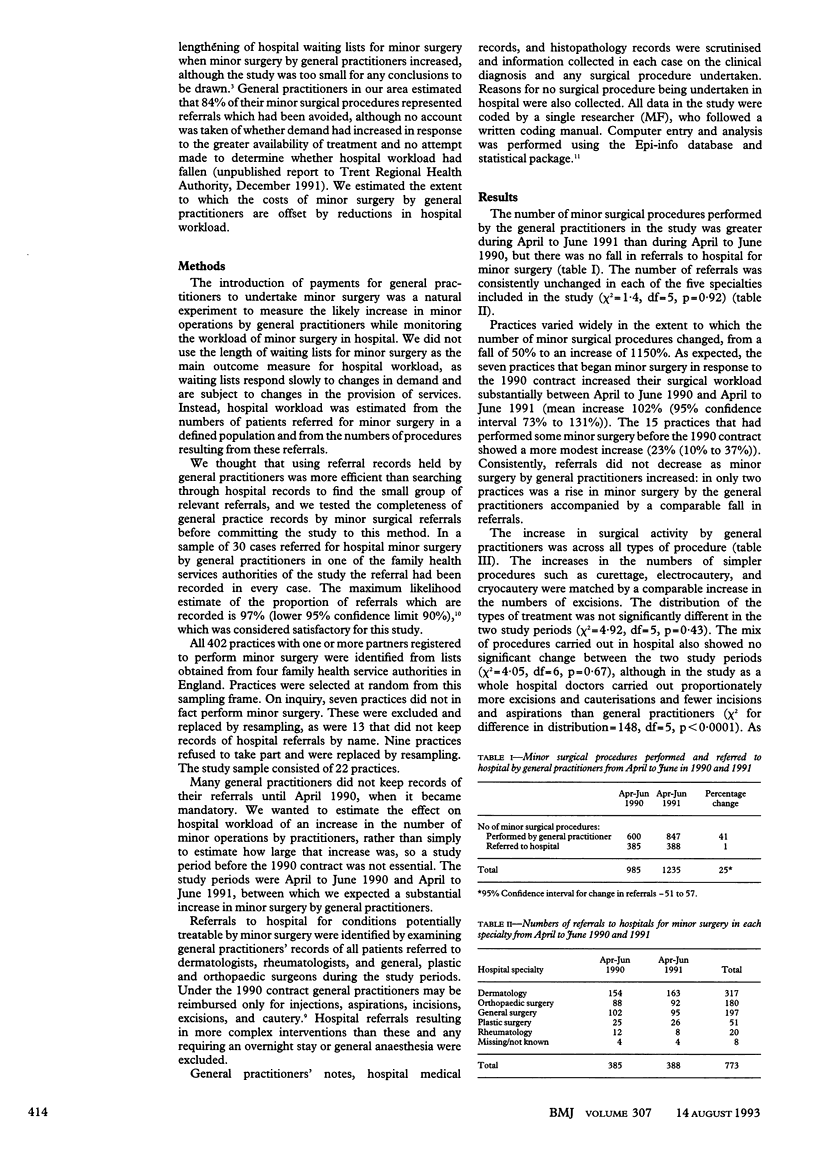
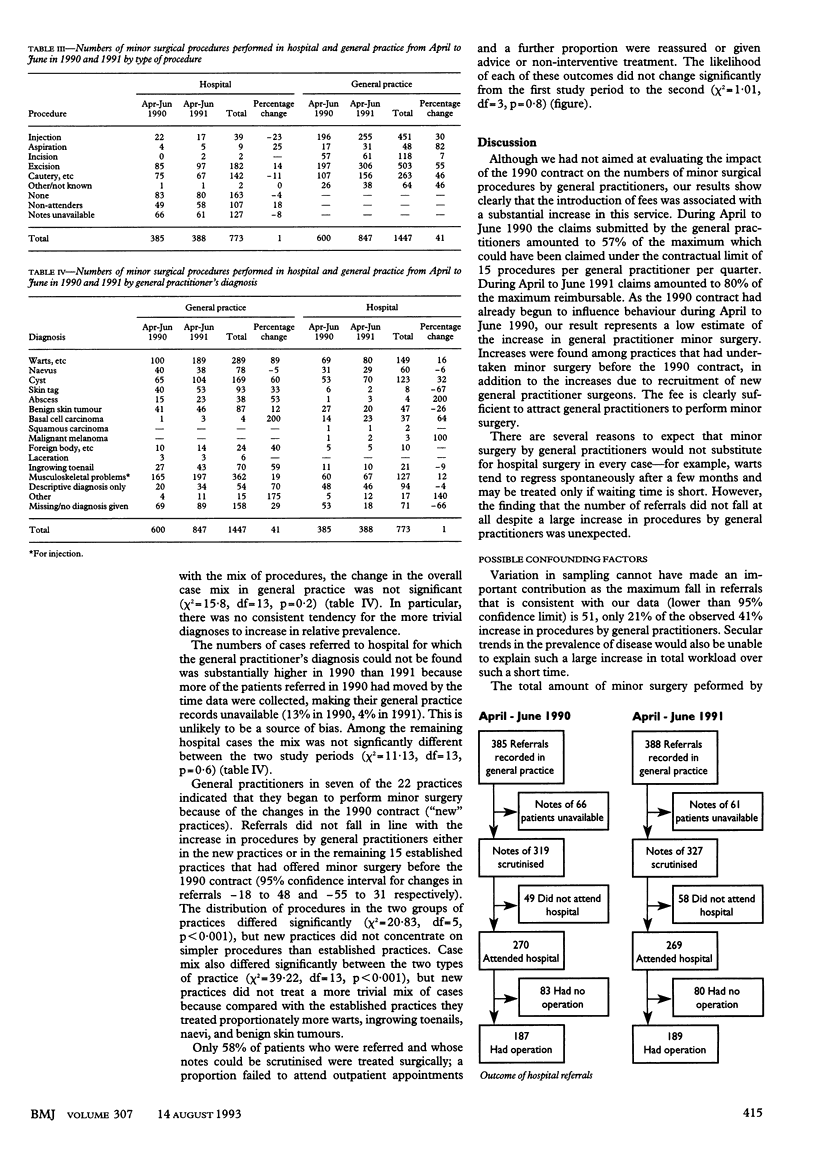
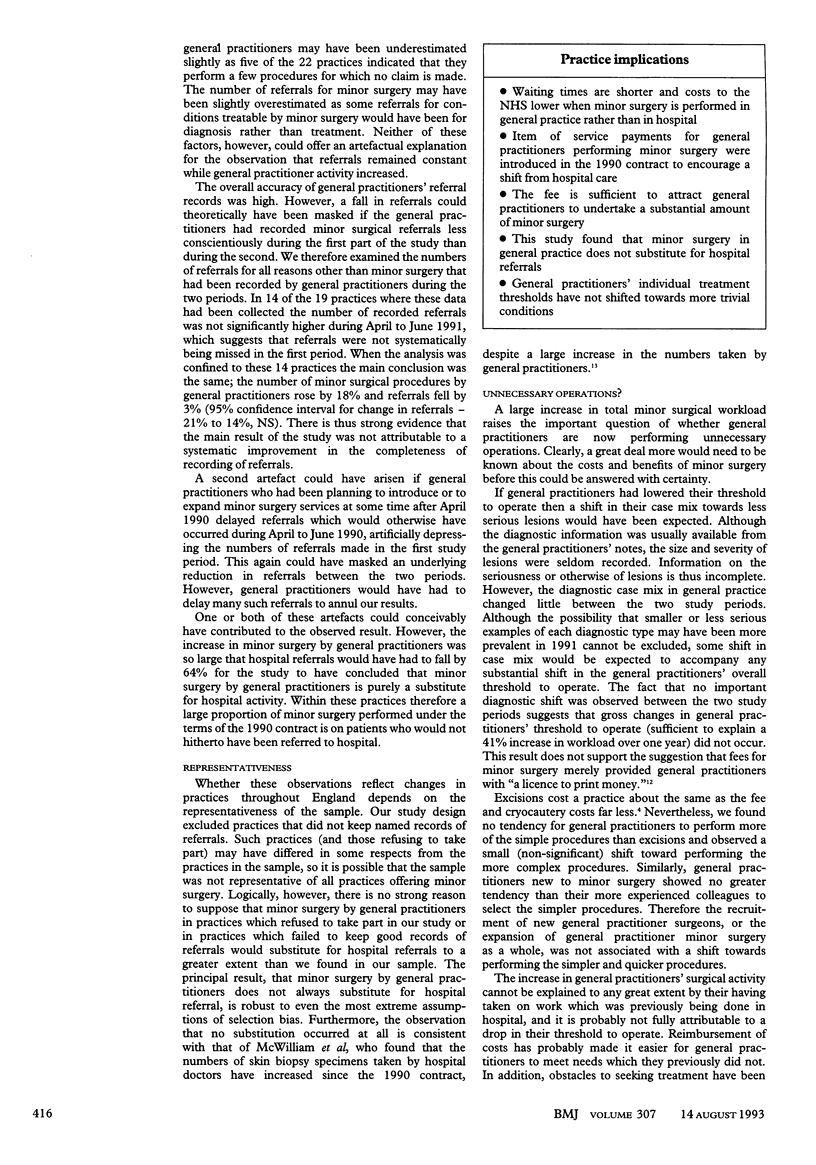
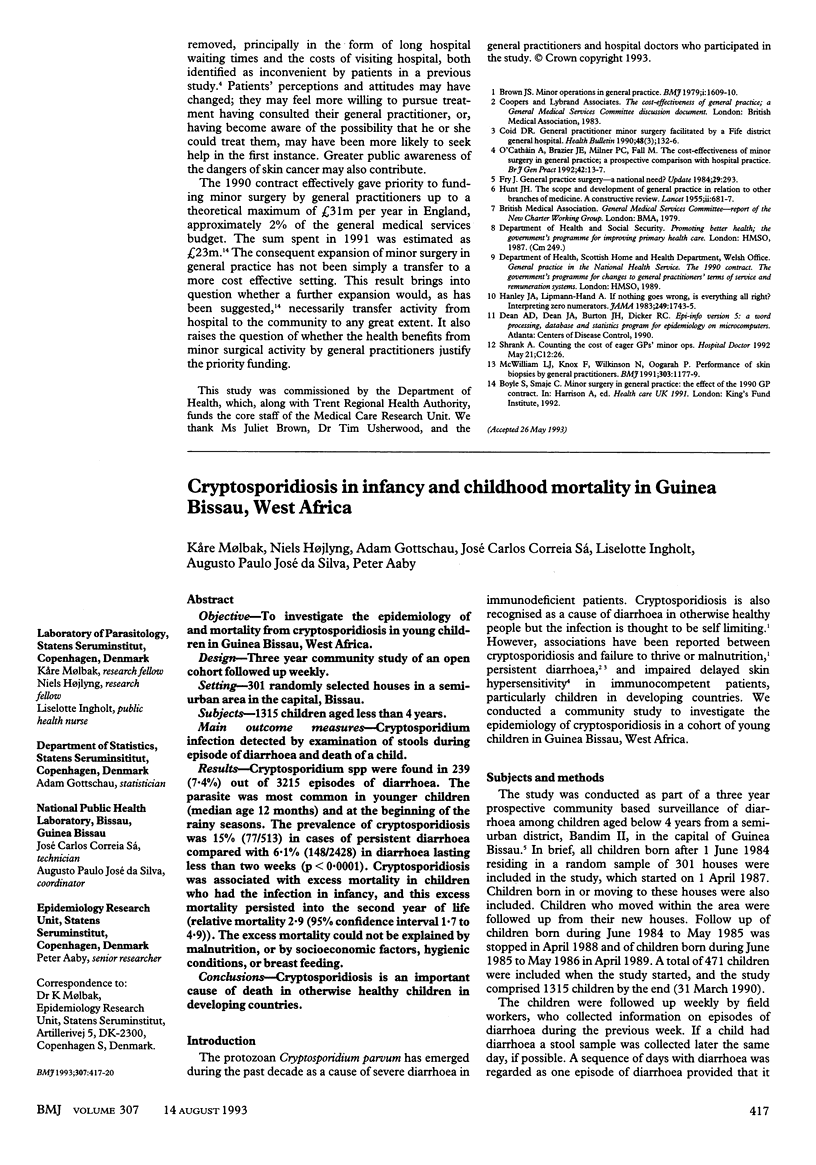
Selected References
These references are in PubMed. This may not be the complete list of references from this article.
- Brown J. S. Minor operations in general practice. Br Med J. 1979 Jun 16;1(6178):1609–1610. doi: 10.1136/bmj.1.6178.1609. [DOI] [PMC free article] [PubMed] [Google Scholar]
- Coid D. R. General practitioner minor surgery facilitated by a Fife District General Hospital. Evaluation of a pilot project. Health Bull (Edinb) 1990 May;48(3):132–136. [PubMed] [Google Scholar]
- HUNT J. H. The scope and development of general practice in relation to other branches of medicine; a constructive review. Lancet. 1955 Oct 1;269(6892):681–687. doi: 10.1016/s0140-6736(55)92255-8. [DOI] [PubMed] [Google Scholar]
- Hanley J. A., Lippman-Hand A. If nothing goes wrong, is everything all right? Interpreting zero numerators. JAMA. 1983 Apr 1;249(13):1743–1745. [PubMed] [Google Scholar]
- McWilliam L. J., Knox F., Wilkinson N., Oogarah P. Performance of skin biopsies by general practitioners. BMJ. 1991 Nov 9;303(6811):1177–1179. doi: 10.1136/bmj.303.6811.1177. [DOI] [PMC free article] [PubMed] [Google Scholar]
- O'Cathain A., Brazier J. E., Milner P. C., Fall M. Cost effectiveness of minor surgery in general practice: a prospective comparison with hospital practice. Br J Gen Pract. 1992 Jan;42(354):13–17. [PMC free article] [PubMed] [Google Scholar]


